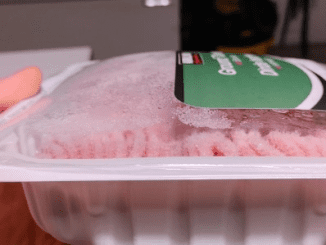Potatoes are a staple ingredient in many kitchens, but did you know that they can become harmful—even poisonous—if not stored or used properly? Health professionals are raising awareness about the dangers of consuming old, green, or sprouted potatoes, which can harbor a neurotoxin called solanine. While potatoes are typically safe, understanding the subtle signs of spoilage can help you avoid unpleasant—and potentially dangerous—consequences.
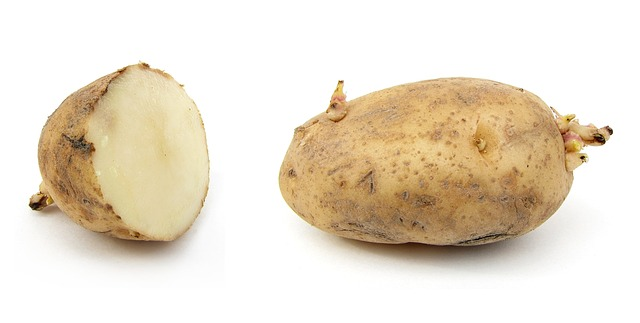
How Do Potatoes Become Toxic?
Potatoes contain natural toxins, primarily solanine and chaconine, which act as defense mechanisms against pests. While these toxins are typically harmless in small amounts, improper storage or aging can lead to increased concentrations, particularly in green or sprouted potatoes.
- Green Patches: When exposed to light, potatoes produce chlorophyll, turning green. This is often accompanied by an increase in solanine, making the potato unsafe to eat.
- Sprouting: Potato sprouts, often called “eyes,” indicate that the tuber has started to age. These sprouts contain concentrated amounts of solanine and can make the entire potato toxic.
The Case of Dangerous Potatoes: A Wake-Up Call
To emphasize the risks, let’s consider the alarming case of Maria Harless from Colorado.
Maria, craving mashed potatoes, used an old batch from her pantry. Hours after consuming them, she woke with a severe headache and began vomiting uncontrollably. At the hospital, doctors diagnosed her with solanine poisoning—a rare but serious condition caused by consuming toxic potatoes.
Solanine poisoning can manifest through:
- Nausea and vomiting.
- Diarrhea.
- Irregular heartbeat.
- Neurological symptoms like hallucinations or paralysis in severe cases.
Tragically, history includes cases where families have suffered fatalities after consuming green or sprouted potatoes in large quantities. These stories serve as sobering reminders to treat potato spoilage seriously.
Recognizing the Signs of Poisonous Potatoes
Spotting potentially harmful potatoes is crucial for your safety. Here are key indicators to watch for:
- Green Coloring: Even a faint green tint is a warning sign of elevated solanine levels.
- Sprouts: Long, white sprouts or “eyes” suggest that the potato is aging and possibly toxic.
- Bitter Taste: A bitter or unpleasant flavor can indicate high toxin levels.
- Soft or Shriveled Texture: While this isn’t always dangerous, it signals that the potato is past its prime and should be discarded.
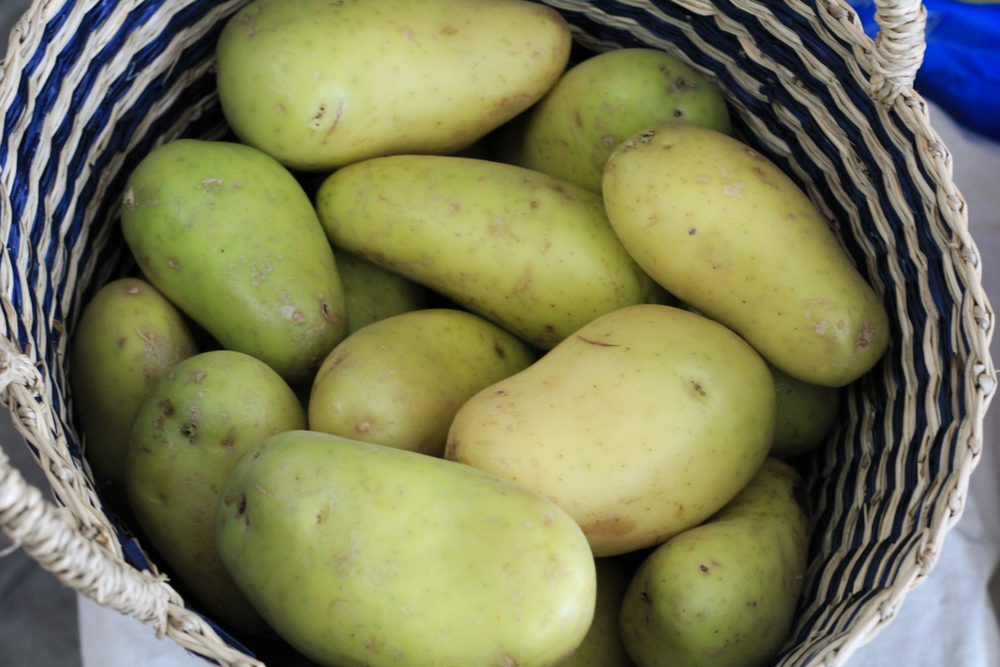
What Causes Potatoes to Turn Green or Sprout?
Several factors can lead to spoilage:
- Light Exposure: Leaving potatoes in light accelerates the production of chlorophyll and solanine.
- Warm Temperatures: Heat encourages sprouting, reducing the potato’s quality and safety.
- Humidity: Moist conditions can promote sprouting and the growth of harmful bacteria or fungi.
How Much Solanine Is Too Much?
The European Food Safety Authority defines harmful solanine levels as more than 1 mg per kilogram of body weight. However, even smaller amounts can cause discomfort in sensitive individuals.
- Sprouts and Skin: The highest concentrations of solanine are found in the skin and sprouts. Removing these parts may reduce toxin levels, but it’s often safer to discard the entire potato if green patches or large sprouts are present.
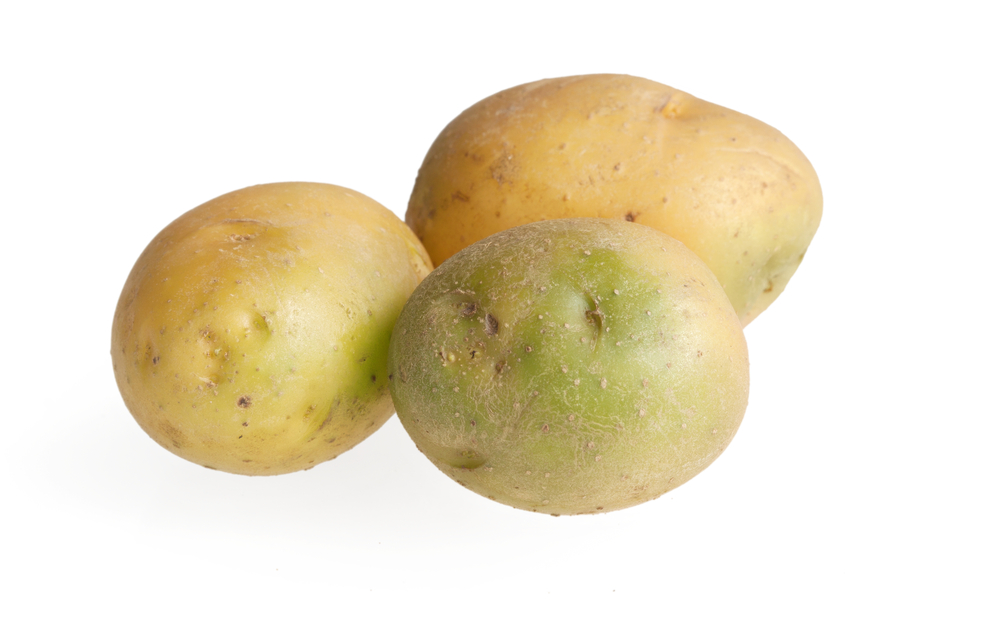
Proper Potato Storage to Prevent Toxicity
Preventing potatoes from turning green or sprouting is easier than you think. Here’s how to store them safely:
- Choose the Right Location
Store potatoes in a cool, dark, and well-ventilated area. Ideal temperatures range between 45°F and 55°F. Avoid refrigeration, as it can convert the potato’s starches into sugars, altering the flavor and texture. - Use Appropriate Containers
Skip plastic bags, which trap moisture and accelerate spoilage. Instead, opt for breathable paper or burlap bags. - Avoid Light Exposure
Keep potatoes in a space shielded from light to prevent chlorophyll and solanine production. - Separate from Onions
Onions emit gases that can speed up the sprouting process in potatoes. Store them separately to prolong freshness.
What to Do If Your Potatoes Have Green Patches or Sprouts
If you discover green or sprouted potatoes, here’s how to handle them:
- Small Green Patches or Sprouts: Trim off these areas thoroughly, ensuring you remove all discolored or sprouted sections. Peeling the potato can also reduce solanine levels.
- Extensive Green or Sprouting: Discard the potato entirely. The toxins may have spread throughout, making it unsafe to eat.
- Soft or Bitter Potatoes: When in doubt, throw them out! Your health isn’t worth the risk.
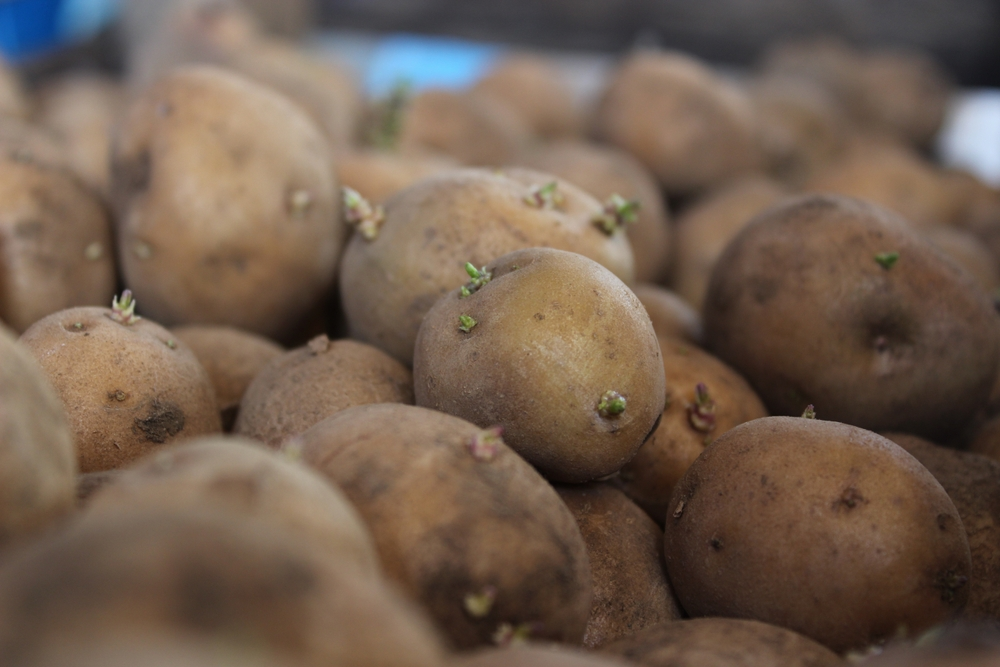
The Bigger Picture: Awareness and Precaution
While solanine poisoning is rare, it’s a real risk that can be avoided with proper care and awareness. Here are a few key takeaways to keep in mind:
- Inspect your potatoes regularly for signs of spoilage.
- Store them in optimal conditions to prevent greening and sprouting.
- Trust your senses—if a potato looks, smells, or tastes off, don’t take chances.
Conclusion: When in Doubt, Throw It Out
Potatoes may seem like a humble kitchen staple, but improper storage or use can turn them into a health hazard. Green patches, sprouts, and bitterness are clear red flags indicating the presence of solanine, a toxin that can cause severe illness or worse.
By storing your potatoes in cool, dark, and dry conditions and discarding any that show signs of spoilage, you can keep your meals safe and delicious. Remember: a little caution goes a long way when it comes to food safety. Protect yourself and your loved ones by staying vigilant about the potatoes you bring to the table.

